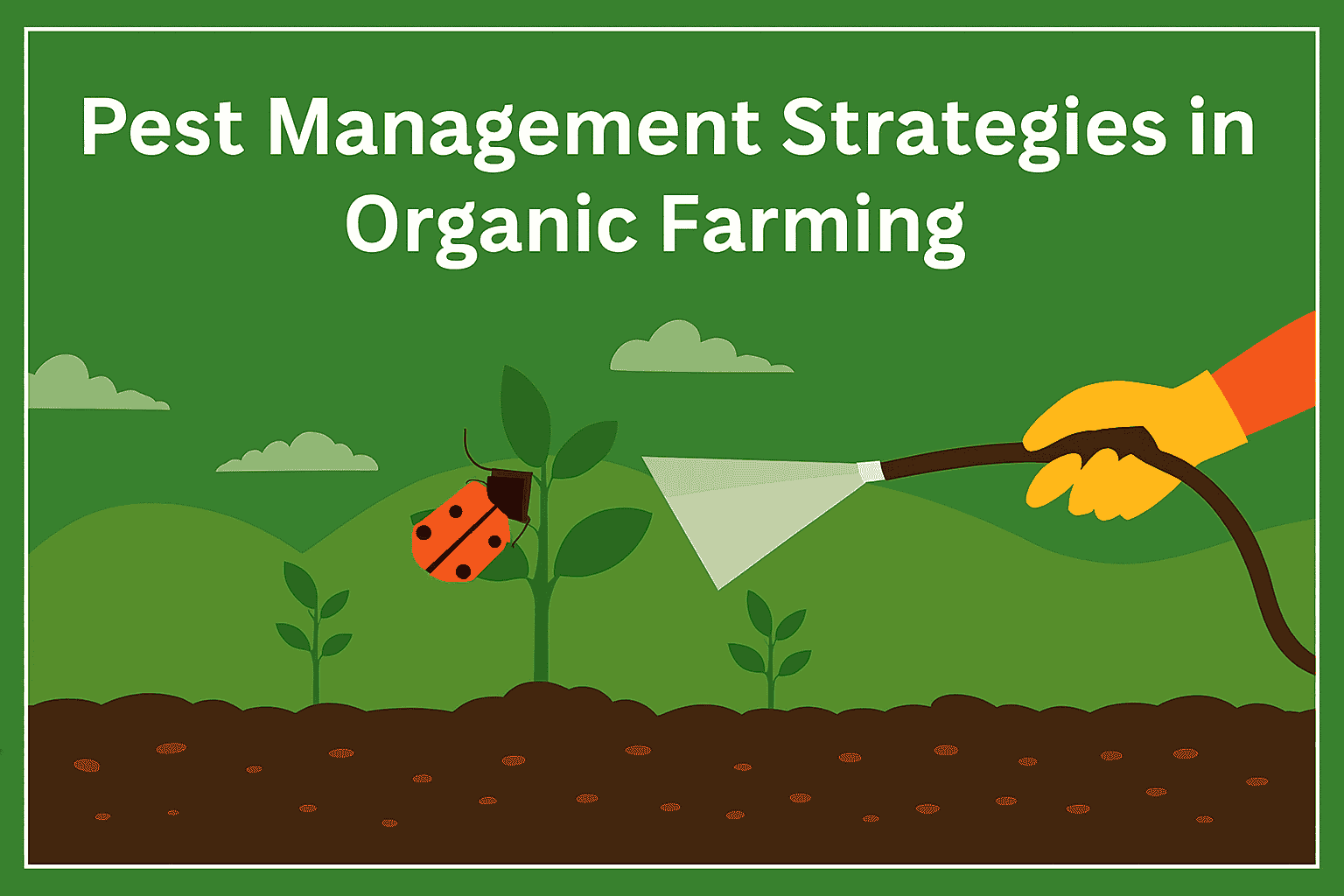
Pest Management Strategies in Organic Farming
Posted on September 19, 2025
Organic farming is on the rise across the world because of the need for healthy, chemical-free food. Perhaps the biggest challenge for organic growers is pest management without synthetic pesticides. Organic farming varies from traditional farming in that it is all about natural equilibrium, diversity, and sustainability. The purpose is not to eliminate pests but to keep them at workable levels while protecting crops, the environment, and public health.
In this blog, we’ll explore effective pest management strategies in organic farming and how they help farmers maintain healthy, sustainable yields.
Why Pest Management Matters in Organic Farming
Pests—insects, weeds, fungi, or rodents—are capable of causing serious harm to crops and reducing productivity. Organic farming practices avoid the use of chemical pesticides, so farmers must adopt alternative practices that focus on prevention, observation, and regulation. This holistic approach is known as Integrated Pest Management (IPM), in which cultural, mechanical, biological, and ecological methods are applied in a complementary combination to obtain crop health.
Key Pest Management Strategies in Organic Farming
1. Cultural Practices for Prevention
Preventing pests from becoming settled is the first step towards organic farming. Some of the common cultural practices include:
- – Crop Rotation: Changing different crops each season disrupts the life cycle of pests and increases the fertility of the land.
- – Intercropping: Planting multiple crops at the same time baffles the pests and attracts beneficial insects.
- – Trap Cropping: Growing a crop that diverts pests away from the main crop (e.g., mustard to divert aphids away).
- – Timely Planting: Changing the planting and harvesting schedule to prevent the peak periods of pest activity.
2. Biological Control using Natural Enemies
Biological control uses living organisms to regulate pests naturally. These include:
- – Insect predators like ladybirds and lacewings prey on aphids.
- – Parasitoids like minute wasps, which lay eggs within pest larvae.
- – Pathogens like Bacillus thuringiensis (Bt), a bacterium that kills caterpillars but is harmless to beneficial insects.
This is an environmentally friendly method and ensures natural biodiversity in the farm.
3. Botanical Pesticides and Plant Extracts
Nature offers a wide range of pest control methods in the form of plant extracts.
- – Neem Oil: Disrupts pest feeding and reproduction.
- – Garlic and Chilli Sprays: Repellents for ubiquitous insects.
- – Pyrethrum Extract: Obtained from chrysanthemum flowers, used against a broad spectrum of pests.
- – These plant products are organic, registered for use in organic farming, and safe.
4. Mechanical and Physical Methods
Effective control is achieved by reducing pests without chemicals:
- – Physical destruction of insects such as caterpillars or beetles.
- – Traps like sticky traps, pheromone traps, and light traps for observation and catching pests.
- – Organic mulching to suppress weeds and break pest habitats.
- – Soil Solarisation by covering ground with plastic sheets to kill weeds, nematodes, and fungi by solar heat.
5. Habitat Management and Biodiversity
Organic farming is concerned with developing an efficient ecosystem. Hedgerows, flowering borders, and waterbodies are conserved by farmers to promote biodiversity. They are visited by pollinators and natural predators to control pests naturally. A balanced ecosystem ensures that there will be no unchecked increase of any pest population.
6. Resistant Crop Varieties
Enhance pest- and disease-resistant crops by far lowering the likelihood of crop loss. For instance, certain rice crops are raised to be stem-borer resistant, and others resist fungal diseases. The breeders are constantly coming up with varieties that can be cultivated using organic inputs.
7. Organic-Approved Inputs
There are certain natural products, however, that are permitted in organic certification standards. These encompass sulphur, copper-based compounds, and microbial sprays. They are applied minimally and only as a last measure, where other alternatives fail, and always with adherence to the organic philosophy.
8. Continuous Monitoring and Record-Keeping
Having knowledge of the population of the pests enables the farmer to respond quickly. By field scouting, using traps, and keeping records, farmers can identify early signs of pest infestation and schedule interventions accordingly.
Organic Pest Control Advantages
- – Environmental Protection: No toxic residues in water or soil.
- – Food Safety: Fewer chemical residues on crops for consumers.
- – Sustainability: Maintains biodiversity and soil fertility.
- – Cost Efficiency: The majority of the methods use farm materials rather than expensive pesticides.
- – Market Value: Greater demand for organic food provides farmers with improved returns.
Problems in Organic Pest Management
Organic pest management, though being a sustainable and environmentally friendly option, also has certain problems that should be addressed by farmers. A number of methods like handpicking of insects or natural mulching are highly labour-intensive and demand constant effort. Natural means take time to show slow effects and need patience and proper timing. Furthermore, pest- and disease-resistant varieties of crops remain few, and farmers remain exposed to pests. Organic pest control is also dependent on the farmer’s acquaintance with the life cycles of pests, their natural enemies, and natural ecosystems. On the verge of collapse, these challenges require incessant training of farmers, collective community work, and intense support from agricultural research agencies in the production of effective and creative solutions.
Conclusion:
Organic farming pest control is not elimination but balance. By mixing cultural practices, biological control, botanical extracts, and ecological methods, farmers can safeguard their crops without harming the environment. And it will take more work and wisdom, but the dividends—are secure food, healthier environments, and sustainable agriculture—are worth it.
With demand for organic products continuing to rise, these measures will play an important role in shaping the future of agriculture.
